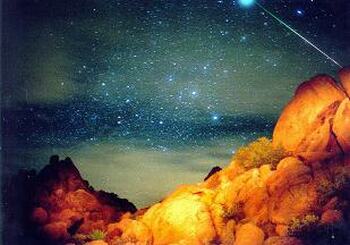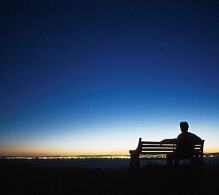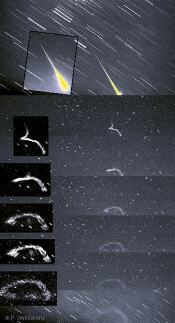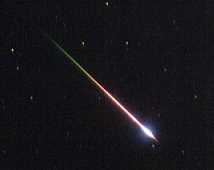
Publisher:
Bonnie King
CONTACT:
Newsroom@Salem-news.com
Advertising:
Adsales@Salem-news.com

~Truth~
~Justice~
~Peace~
TJP
Aug-13-2006 15:40

 TweetFollow @OregonNews
TweetFollow @OregonNews
Watching the Sky – A Venture Out to View the Perseids Downpour
Lela Taylor, Salem-News.comWhat happens when a “newbie” decides to watch the sky for a meteor shower?
 Leonids Meteor Shower November 17, 1998 From Joshua Tree National Park, California Credit: Wally Pacholka / NASA |
(SALEM) - For me, watching the sky for falling meteors has always been a potentially exciting event, but unfortunately they usually happen at night – late at night! I am usually asleep, forgetting to set the alarm, and upon awaking in the early morning dawn, realize I had slept through yet another meteor shower.
I was determined to make last night an exception.
My neighbor and new found friend Janet Szliske and I woke at 1:15 AM set out a few minutes later, traveling west on Highway 22 to an open space by the bird sanctuary.
We chose the location because of the good horizon, sat up our chairs, pulled out our snacks and waited, and waited, and waited. By 3:30 AM, we had seen a total of eight falling meteors.
Each brought a loud “Oh! Did you see that!” and of course we were looking in the opposite direction. I am sure our “Oh’s and awes!” echoed across the open fields, startling sleeping wildlife.
 newearth.demon.co.uk |
It was amazing how once adjusted, our “night vision” increased just how many stars were visible. The night also forged a new friendship of which I am sure will last a lifetime. We headed home feeling very small, on a very small planet existing in a very large universe.
I had many questions about what we had seen (more correctly had hoped to have seen) and looked on the internet to find answers that would help prepare for my next venture to “sky watch.”
Following is what I gleaned from the Internet: What are meteor showers?
 Leonid Meteor Shower 11/16/97 |
Comets shed the debris that becomes most meteor showers. As comets orbit the Sun, they shed an icy, dusty debris stream along the comet's orbit. If Earth travels through this stream, we will see a meteor shower. Depending on where Earth and the stream meet, meteors appear to fall from a particular place in the sky, maybe within the neighborhood of a constellation.
Meteor showers are named by the constellation from which meteors appear to fall, a spot in the sky astronomers call the radiant. For instance, the radiant for the Leonid meteor shower is located in the constellation Leo. The Perseid meteor shower is so named because meteors appear to fall from a point in the constellation Perseus. What are shooting stars?
 Photo courtesy: NASA |
Traveling at thousands of miles an hour, meteoroids quickly ignite in searing friction of the atmosphere, 30 to 80 miles above the ground. Almost all are destroyed in this process; the rare few that survive and hit the ground are known as meteorites.
When a meteor appears, it seems to "shoot" quickly across the sky, and its small size and intense brightness might make you think it is a star. If you're lucky enough to spot a meteorite (a meteor that makes it all the way to the ground), and see where it hits, it's easy to think you just saw a star "fall."
If you can see each star of the Little Dipper, your eyes have "dark adapted," and your chosen site is probably dark enough. Under these conditions, you will see plenty of meteors.
What should I pack for meteor watching?
· Treat meteor watching like you would the 4th of July fireworks. Pack comfortable chairs, bug spray, food and drinks, blankets, plus a red-filtered flashlight for reading maps and charts without ruining your night vision. Binoculars are not necessary. Your eyes will do just fine.
You can follow either of these links for further information:
http://www.spaceweather.com/
http://stardate.org/nightsky/meteors/
Articles for August 12, 2006 | Articles for August 13, 2006 | Articles for August 14, 2006




googlec507860f6901db00.html

Terms of Service | Privacy Policy
Comments are Closed on this story.
[Return to Top]
©2025 Salem-News.com. All opinions expressed in this article are those of the author and do not necessarily reflect those of Salem-News.com.